
Little Known Beverly Hills Trivia
Beverly Hills is known for its glitz, glamour, and wealth, but it holds some fascinating secrets. Behind its luxurious façade lie intriguing pieces of history and quirky facts most people don’t know. This ABC Moving Systems guide will uncover some of the hidden gems about one of the world’s most famous neighborhoods, giving you fresh insights into little known Beverly Hills trivia.
Hidden Oil Wells in Beverly Hills
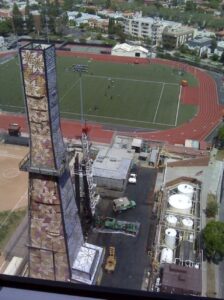
Beverly Hills is not just a city of luxury; beneath its surface lies an unexpected resource—oil. Hidden within the city’s glamorous surroundings are several active oil wells. These wells have been discreetly integrated into the landscape, often disguised by false building facades or tucked away behind large structures.
One of the most well-known spots is at Beverly Hills High School, where an oil derrick quietly pumps beneath the football field. Surprisingly, the revenue from these wells has significantly contributed to the city’s wealth and development.
Oil drilling in Beverly Hills dates back to the early 20th century, long before the area became famous for movie stars and luxury homes. Many people, even longtime residents, are unaware of the operational wells that continue to produce oil today.
To this day, there are oil pumps concealed within plain sight across various parts of the city. While Beverly Hills is renowned for its high-end lifestyle, these hidden oil wells play a significant role in its economic history and current operations.
Beverly Hills’ Short-Lived Speed Limit Law
- Beverly Hills once had a very unusual speed limit law in place for a short time.

15 MPH Speed Limit - In the 1920s, the city tried to curb speeding by introducing a strict 15 miles-per-hour limit.
- This law was intended to control reckless driving on the city’s narrow streets.
- Wealthy residents and celebrities quickly protested the slow limit, claiming it was impractical.
- The speed limit was often ignored by drivers, especially those with flashy, powerful cars.
- The city found it difficult to enforce the law due to its widespread unpopularity.
- After a brief period, Beverly Hills repealed the law and raised the speed limit to a more reasonable level.
- Today, it’s a forgotten piece of history, overshadowed by the city’s modern traffic rules and vehicle congestion. Truly, a piece of little known Beverly Hills trivia.
Beverly Hills’ Iconic Palm Trees Aren’t Native
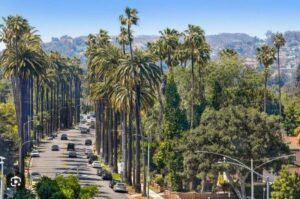
Beverly Hills is famous for its palm-lined streets, but these iconic trees are not native to the area. In fact, the towering palms that define the city’s landscape were imported and planted in the early 20th century.
During the 1930s, the City of Beverly Hills wanted to create a unique, exotic aesthetic for the growing town. As part of a beautification project, thousands of palm trees were brought in from Mexico and other warm regions. Today, there are over 14,000 palm trees in Beverly Hills, primarily the Mexican fan palm variety.
Though these trees are synonymous with Southern California, they actually require a lot of care to thrive in the region. The city’s warm, dry climate is suitable, but it isn’t the natural habitat for these palms.
Some experts say that these iconic trees might not be as prevalent in the future due to environmental changes and disease. However, for now, they remain one of Beverly Hills’ most recognizable features, adding to the city’s allure and Hollywood glamour. ABC Moving Systems has extensive experience working amongst the palm trees of Beverly Hills.
A Beverly Hills Post Office With Fame
- Beverly Hills is home to a post office that once served some of the biggest names in Hollywood.
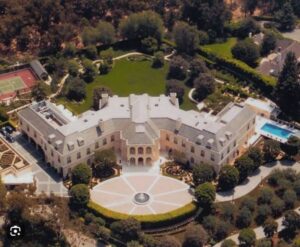
Beverly Hills Post Office - The Beverly Hills Post Office, located on Crescent Drive, became famous for the celebrities who frequented it.
- Stars like Marilyn Monroe and Cary Grant were known to have had mailboxes there during their careers.
- The post office became a hot spot for autograph seekers hoping to catch a glimpse of their favorite stars.
- Built in the 1930s, the building’s architecture reflects the classic, elegant style of Beverly Hills.
- Over time, it has become a part of the city’s history, linked to Hollywood’s golden age.
- Today, the building no longer functions as a regular post office, but its legacy remains.
- It now serves as the Wallis Annenberg Center for the Performing Arts, hosting theater and cultural events.
- The building’s transformation is a blend of old Hollywood charm and modern art culture.
- Though it no longer handles mail, its glamorous past continues to be a point of interest for visitors.
The Historic Beverly Hills Hotel Scandal
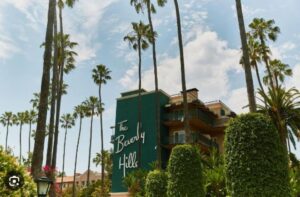
The Beverly Hills Hotel, known as “The Pink Palace,” has hosted Hollywood’s elite for over a century. However, it’s not without its share of scandals. One of the most notorious involved actor John Barrymore in the 1930s.
He was accused of being part of a wild party that led to significant damage in one of the hotel’s lavish bungalows. Barrymore, famous for his dramatic roles and equally dramatic lifestyle, reportedly hosted a string of extravagant parties, often filled with Hollywood’s brightest stars.
The hotel management, unhappy with the chaos, nearly banned him from the premises. This scandal added to the hotel’s reputation as a place where Hollywood’s elite could indulge. While the scandal caused a stir at the time, it didn’t tarnish the hotel’s allure.
Instead, it reinforced its image as a glamorous retreat where celebrities could live out their wildest fantasies. Today, the Beverly Hills Hotel remains a symbol of Hollywood luxury and mystique, with its storied past adding to its charm. ABC Moving Systems recommends stopping in at The Beverly Hills Hotel to enjoy the lobby and possibly see a celebrity or two!
Celebrity Homes That Aren’t What They Seem
- Beverly Hills is known for its celebrity homes, but not all of them are as they appear.
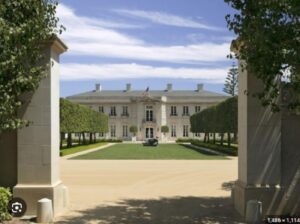
Beverly Hillbillies House - Some famous homes are actually facades created for movies or TV shows, not actual celebrity residences.
- The house used in The Beverly Hillbillies is a well-known example. It’s not a real mansion, just a set.
- Many tour companies claim certain houses are celebrity homes, but often they aren’t owned by stars at all.
- Some stars use decoy homes to avoid paparazzi, giving the illusion that they live in multiple locations.
- Large estates often rented for events or photo shoots are sometimes mistaken for celebrity residences.
- In some cases, homeowners advertise their properties as “once owned by celebrities” to increase value or appeal.
- Not all glamorous houses in Beverly Hills have been lived in by the rich and famous, despite appearances.
- The city’s reputation draws tourists hoping to catch a glimpse of celebrity life, but looks can be deceiving.
- Beverly Hills continues to intrigue with its mix of real and imagined celebrity homes.
The Original Beverly Hills Land Use
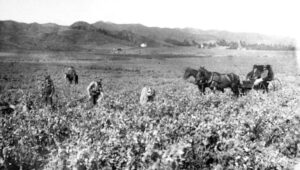
One little known Beverly Hills trivia fact is that before the town became the luxurious city it is today, its land had a much humbler purpose. Originally, the area was a vast lima bean farm in the early 1900s. Investors bought the land, hoping to strike oil, but their search was unsuccessful.
Instead of abandoning the project, they shifted their focus to developing a residential community. By 1906, the first plots of land were sold, and the city of Beverly Hills began to take shape. The transformation from farmland to glamorous neighborhood was gradual but significant.
Developers capitalized on the area’s natural beauty, including its proximity to the nearby Los Angeles countryside. By the 1920s, Beverly Hills had already attracted wealthy residents, and Hollywood stars soon followed.
This shift from agricultural land to a haven for the rich and famous is a remarkable part of Beverly Hills’ history. Today, it’s hard to imagine that the iconic palm-lined streets and luxury homes once grew lima beans.
The Forgotten Beverly Hills Monorail
- In the 1960s, a futuristic transportation idea emerged: a monorail system for Beverly Hills.

Beverly Hills Speedway – circa 1920 - The proposed monorail would connect Beverly Hills with other parts of Los Angeles to alleviate traffic congestion.
- The plan envisioned sleek trains running on elevated tracks above the busy streets, offering a modern transit solution.
- It was backed by influential figures, including city planners and local business leaders who saw potential in the idea.
- Despite early enthusiasm, the project faced resistance from residents concerned about property values and visual disruptions.
- Financing became another major obstacle, with high costs making the monorail increasingly difficult to justify.
- By the late 1960s, the ambitious monorail project was officially scrapped, and Beverly Hills continued relying on cars.
- Although the plan never materialized, it remains a curious “what if” in the city’s history.
- The idea of a monorail in such a car-centric city fascinates historians and urban planners to this day.
- Had it succeeded, Beverly Hills might have looked very different, with sleek trains zipping above its famous streets.
Little Known Beverly Hills Trivia – An Overview
Beverly Hills is full of surprises beyond its fame and luxury. These little-known facts highlight the city’s rich history and unique quirks. From forgotten projects to unusual celebrity homes, Beverly Hills remains a place of fascination. ABC Moving Systems invites you to explore the many singular stories that comprise Beverly Hills’ history.

